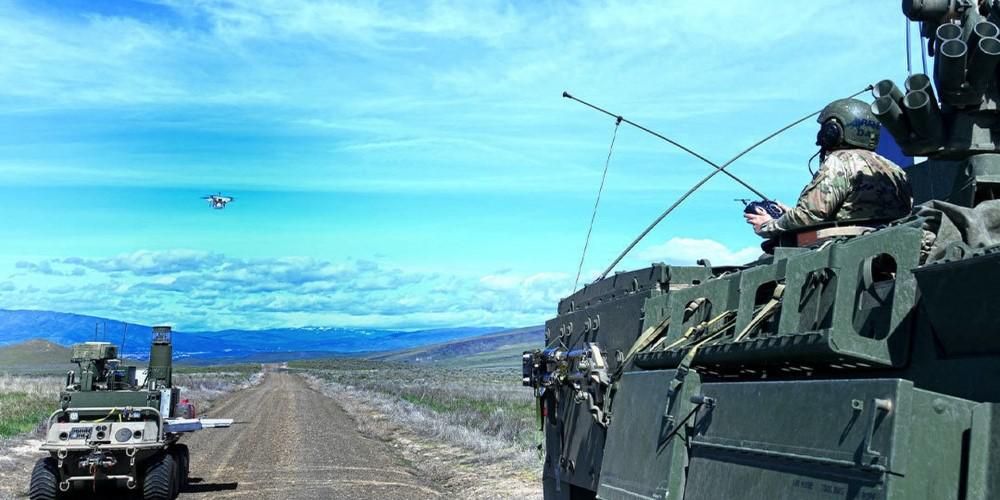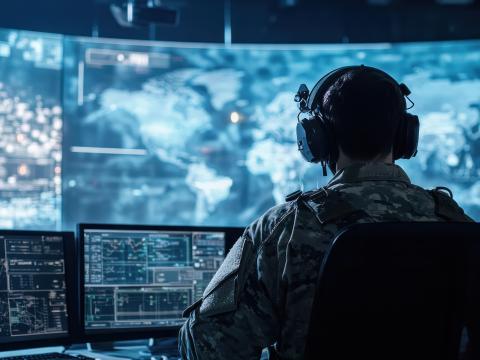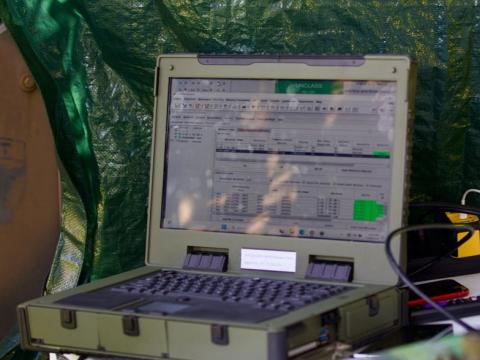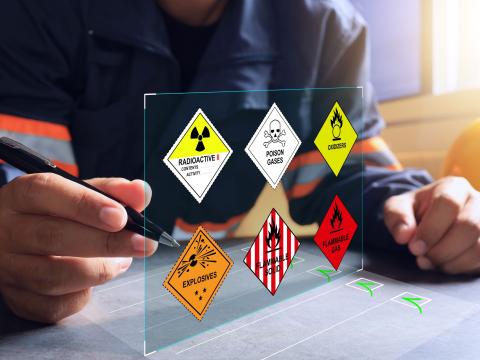Creating a Sustained Environment for Multidomain Experimentation
With the U.S. Defense Department’s pursuit of Joint all-domain operations and the integrated command and control technologies needed to support activities across sea, land, air, space and cyberspace, the Army is looking at how to move beyond its first year of experimentation. The service is working to put in place a more sustainable approach to assessing and experimenting with Joint All-Domain Command and Control, or JADC2, capabilities, to support large-scale combat operations through each warfighting domain.
In essence, the service is developing a persistent JADC2 experimental environment, reports Col. Eulys “Bert” Shell, USA, director, Joint All-Domain Command and Control Technical Division, U.S. Army Joint Modernization Command (JMC), part of Army Futures Command. Col. Shell spoke at the AFCEA Alamo Chapter's May 19 virtual luncheon.
“Our commanders need the ability to visualize and understand the battlespace across the domains to create those windows of opportunity,” Col. Shell stated. “And we do pretty well right now in the land, air and sea [domains], but we haven't yet cracked the code effectively on cyberspace, the electromagnetic spectrum and the information environment.”
The service began its JADC2 development through participation in the JADC2 campaign plan that was initially led by the Air Force Warfighting Integration Capability, AFWIC, and which is now in the hands of the JADC2 Cross Functional Teams through fiscal year 2021. Over the next few months, JMC will help plan which future JADC2-related events will support the service’s experimentation efforts.
The Army started with trials during Project Convergence, the Joint Warfighting Assessment (JWA) 2019, and other tabletop exercises and events with the combatant commands. The development of Army-related JADC2 capabilities also included the initial partial linkage of sensors and the Army’s tactical network with the other services, through the Air Force’s JADC2 experimentation nucleus, their Shadow Operations Center out at Nellis Air Force Base, Nevada.
“For the first year of experimentation with JADC2, the first thing we did is connected our experimental nodes,” Shell explained. “We said, ‘Hey, we're going to interconnect some of our battle labs and our experimental nodes with Nellis and the other services, the Marines and the Navy as well, and interconnect them together. And actually, my team leveraged our tactical network to sort of bridge some of the accreditation issues we had with strategic comms [communications] at some of the bases.”
Because that process took too much time and a lot of planning, the Army wants to establish a more sustained experimentation platform, Shell clarified. “What we want to do is create an environment where we take each of the services’ representative nodes, connect them together, connect the Joint Staff together as well and just create that environment where we can really get after experimentation. That's what we're leaning for now.”
The federated mission partner environment, or MPE, will be an important part of allied JADC2 operations, he continued. “When we set up this MPE, that becomes the primary warfighting enclave,” Shell stated. “We put all of our mission command systems that are authorized to be on that. We put them on and that becomes our primary means of meeting our information exchange requirements.”
This effort will be crucial to adroitly employing JADC2 across partner nations—especially in cyberspace and through the spectrum. These network connections will be the focus, as the important part of the United States’ ability to connect to allied technologies and harness additional capabilities, Shell emphasized.
“With the Army, we know we're going to fight with our partners as we put our calibrated force posture forward in theater, and we would be stupid not to be able to integrate with our partners or host nation and then our allies that are there so we can take advantage of their sensors, their resources, their cyber capabilities,” the colonel stated. “So, the Army is making an effort right now to transition our tactical formations to operating on a mission partner environment at the Secret releasable classification level as our primary warfighter network.”
And while the Army and the Joint Force operate primarily on the Secret Internet Protocol Router (SIPR) and Joint Worldwide Intelligence Communications System (JWICS) networks—and these network enclaves meet the key U.S. information exchange requirements—“they hamper our interoperability necessary to fight with multinational forces,” Shell acknowledged.
As such, JMC is working to expand its network to include two secure networks, one at the Five-Eye level—connecting the so-called Five Eye partner nations of Canada, the United Kingdom, the United States, Australia and New Zealand—and another at the NATO-level, followed by a top-secret enclave and SIPR-U.S.-only enclave. This expansion will enable connection to other labs that the services are using for JADC2 experimentation.
The Army will gear up to test its efforts during the next JWA the last week of June and early July 2021. The JADC2 effort of JWA will be tied to the Pacific Sentry event held by the U.S. Indo-Pacific Command, Shell announced. This year’s JWA was rescheduled due to the pandemic.
The JWA 2021 will build on the success of the 2019 exercise, during which the United States worked with the Five Eye nations to assess initial JADC2 capabilities. “We had a U.K. brigade, a Canadian brigade, Australian and New Zealand [representatives] and also we had Singapore and France play with First Corps,” he shared. “So, we've made a lot of progress, particularly with the Five Eyes.”
The participants were able to integrate mission command systems together with each other as well as integrate fire systems through the Artillery Systems Cooperation Activities, or ASCA, protocol. “A shared COP [common operating picture] has been an objective and we've been able to get after that,” the colonel confirmed. “We were able to do effective call for fires so we can leverage field artillery assets [from the other nations].”
“We've got to be able to be interoperable now during competition, but more importantly as well during transition to armed conflict, and we need to be ready,” the colonel said. “We look forward to helping inform this joint concept for JADC2 and moving the JADC2 problem set down the road.”
You may also be interested in:
U.S. Army Sets Aside Money for Joint All-Domain Operations
Air Combat Command Is All in on JADC2





Comments